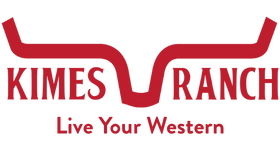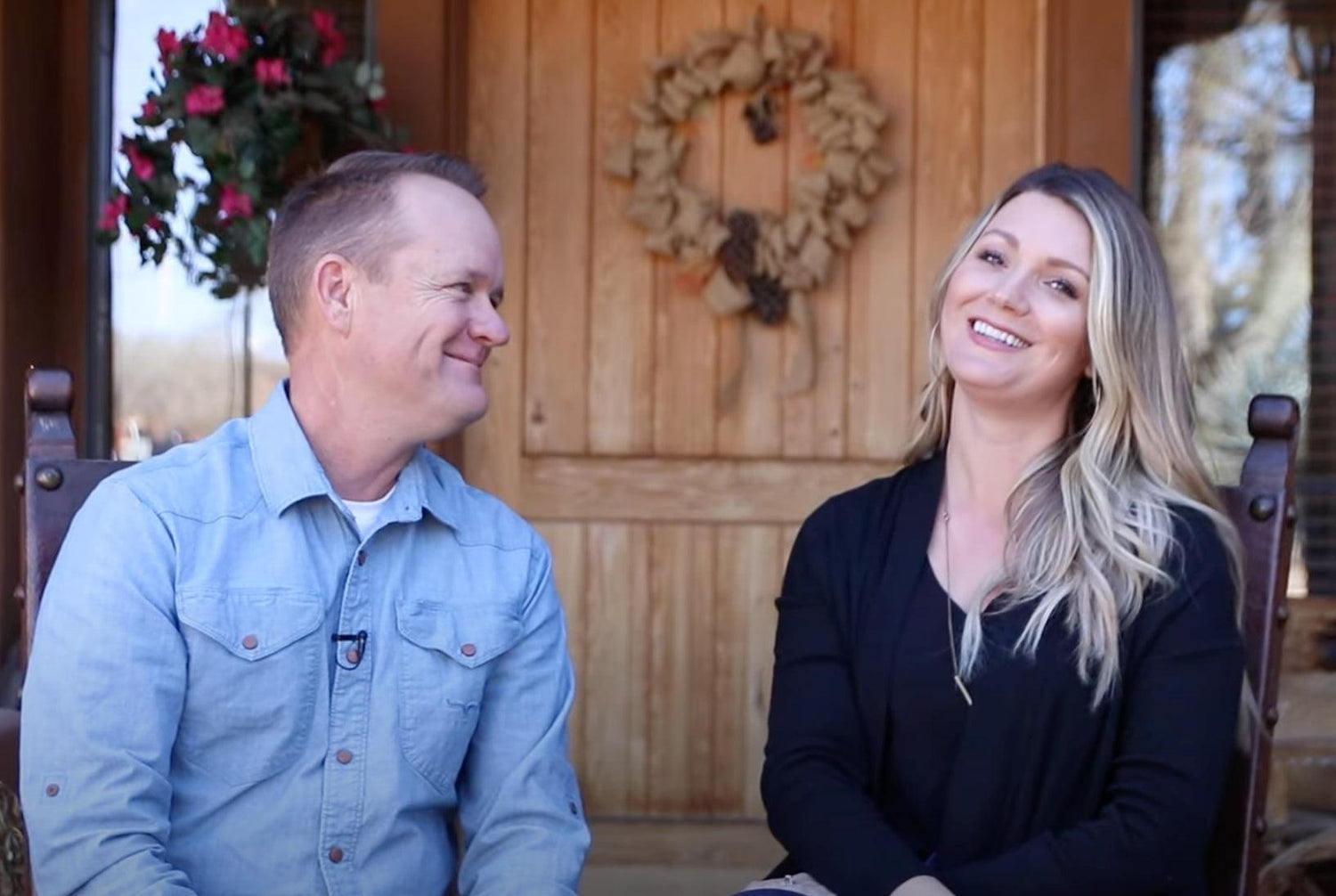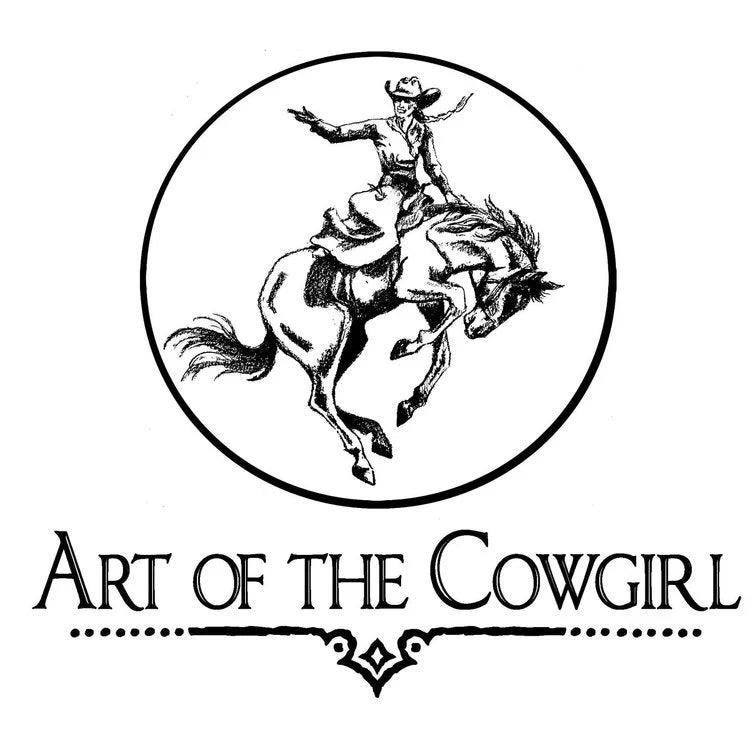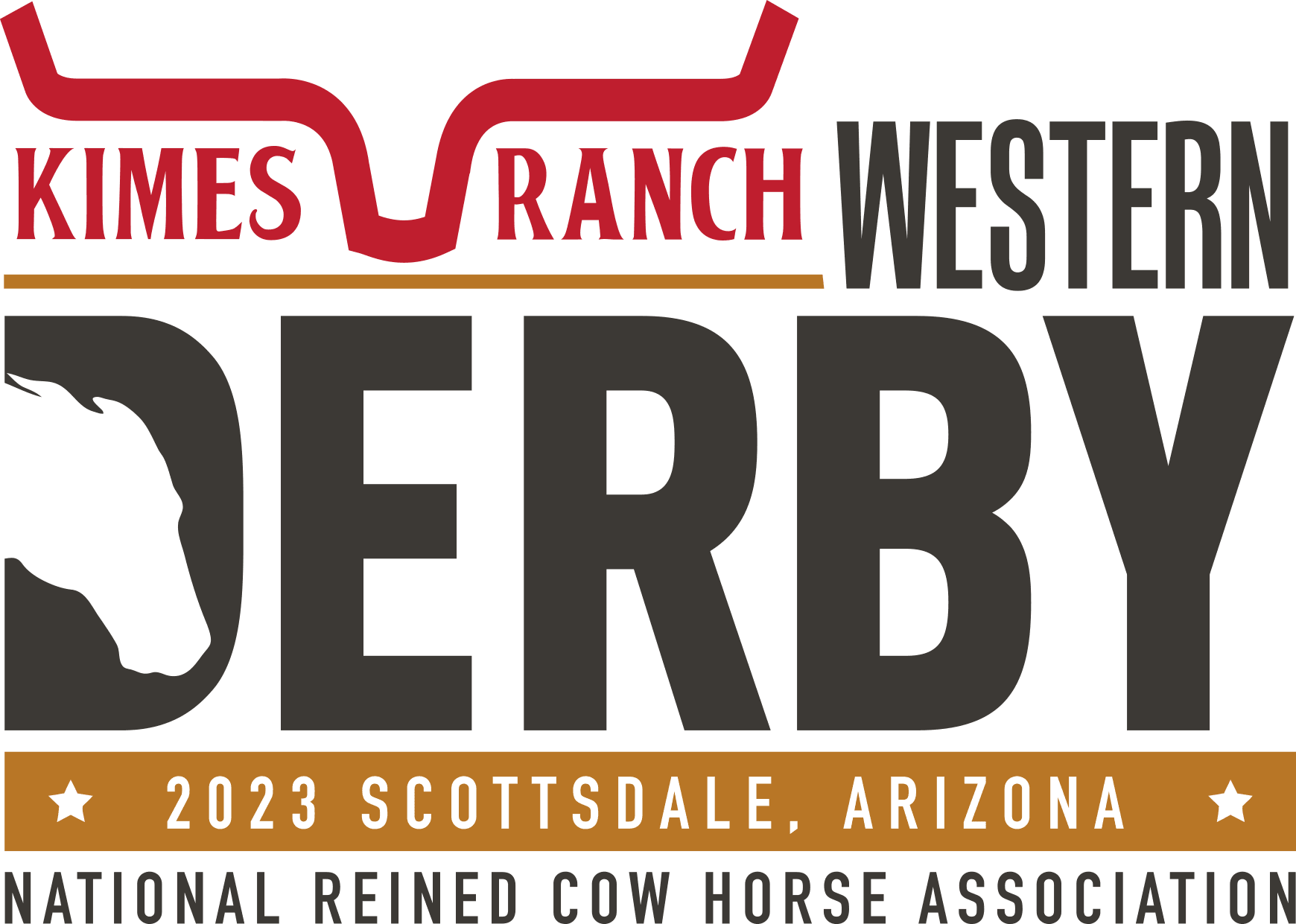About The Brand: Kimes Ranch video transcript:
Whenever you guys can pull it together. We're gonna start . Okay. . I'm better by myself. I don't really like to share the screen. That's not kidding.
Are you laughing because this is awkward at the moment, staring at you like this. Does somebody need to an ask us questions so we can start, or do we just need to like roll it? There we were in March of 2009, dead broke. Not knowing what to do. Let's spend the money we don't have and go start a jean company.
It'd be great years later, here we are. And the end.
Okay, you can start like that, but like, without the like, sarcasm. I'm a, I'm a bad recorder from the forties. Will, Becky, should we introduce. Do you wanna introduce who you are? That would be great. How about you introduce yourself? I'm Amanda. I'm Matt. It's so nice. . Nice to meet you.
Okay. Hi, I'm Amanda Kimes. I'm Matt Kimes of Kimes Ranch. This is our story, the American Dream. You go first there We were on a sunny day. Uh, so back. Gosh, let's see, what was it? March of 2008. Nine. 2009? No, it was eight. No, we got married in December of 2008 and we started a company in March of 2009. We got married in 2008.
And then in March of 2009, neither Matt or myself were happy with the direction of our employment. Matt was working a finance business, which was tanking because the economy was crashing. If everyone remembers the great recession. And I was a, uh, wine, uh, in the wine distribution business. Um, and I was terrible at it cause I drank all of my inventory.
It's not entirely true, but it was also going nowhere due to the, uh, economy. So we decided to build a brand together, and that was always something we wanted, was to build a brand, something that became bigger than Matt and myself. And we both had this great idea to start a gene company because should have done t-shirts and hats.
We should have done t-shirts and hats. So we went with the hardest garment there is to make, cuz we didn't know what we were doing. But lo and behold, the universe was telling us what we should do because that very night on the Discovery Channel was an episode of how it's made and what we're on it that night.
Jeans. Jeans. So we learned that night how to make jeans from how it's made. We also Googled how to make jeans. That helps as well. Very insightful. So we, neither of us have a design background or any kind of, uh, background in, in textiles at all. But, uh, we had the dream of building a jean company. We knew jeans from wearing them and uh, different aspects, you know, everything from fashion on an every day to riding.
And, uh, we felt the easiest way to get into the market would be go to a specific, um, niche, which would be riding. And so we created a, uh, jean for those that ride, for people that rode. We grew up showing quarter horses, and that's our background. So we were like, well, you know, we'll just make jeans and take them to our core market, people that we've known forever, and why wouldn't they wanna buy?
Um, when everybody knows who we are. So that's what we did. We quit our jobs basically within a few days of this, um, how it's made episode. And we went to Los Angeles and went to Garment District and uh, which was a ghost town at the time. It was a ghost town. We bought denim and rolls of paper to make patterns and things to sew jeans.
Um, now we said we don't have a design background or anything, nor do we know how to sew, however, I was going to sew the first pair of jeans. We didn't have a contractor, so we didn't have any contacts over there. And even to this day, it's hard to get on and find some sort of list of contractors. It's very cat and mouse over there.
So, um, we didn't have a way of finding out who to use. So again, Amanda was gonna sew for us. So we brought all this home with this, uh, great idea that we're gonna take a sewing machine and, and make a pair of jeans and go. As you can imagine, that did not work at all, not even a little bit. So the next best thing is to hire, uh, somebody off of Craigslist.
Craigslist, , eh, six weeks and a bunch of money later. We had the world's worst pair of jeans. We tried them on the Starbucks. In downtown Scottsdale and, they ripped in the crotch and we were not deterred. We thought they were fantastic, but everyone saw your underwear. We still have them hanging, uh, in the office as a reminder of how far we've come.
Um, at that low point, which now I think we're about six weeks into this process. Um, I did some research online until I finally found that elusive list and, uh, there were like 50 different names of different contractors, and the 30th person answered the phone. And he remains our cutter to this day. And he put us onto our sewing facility.
And those two, we went over and met with him the following week and they've been with us ever since. And as well as our pattern maker. Yeah, Leslie, love Leslie. So she looked at what we did and was like, I can do better. And she came back within three hours and 150 bucks. And we had two patterns that were, uh, what we currently use today, the Betty and the Barney.
And we were off and running. We made our first 300 pair of jeans and we were going to a horse show and we were gonna sell 'em all and turn around and do it again and again and make millions of dollars. And we went to the first horse show. We showed up and nobody cared. No, not one person where our friends took some and we're like, oh, very good, thank you.
But at the time we were making a product that was completely different than was out there. It was higher rise, it was slimmer. It was, uh, darker denim, uh, and everything at the time was super low rise on the women's side, overprocessed on the men's, crazy big baggy. And, um, it was a total like where we wanted people to be and we took a huge leap over here and they just wanted to be over here.
So they looked at our product and didn't, they were very kind, but they didn't want anything to do with it. So, uh, that was our, our, one of our first obstacles. So since nobody wanted to buy our. Um, we were like, okay, well we can't sell 'em at horse shows, but I'm sure we can sell them at, um, truck stops, swap meat on the side of the road, swap meet.
We tried to go to swap meet and sell 'em for $10 over what we made 'em for so we could take that money and go adjust, make adjustments and do it again. And, uh, we had a handmade sign off out of cardboard that said, come try jeans on in a motor home. And we would park it on the side of the. as our friends drove by and called us like, what the heck are you doing?
What are you doing? Why are you torturing yourselves? I don't understand why no one wanted to come into a creepy motor home and try on. Yeah, come on into our motor home. Try on our jeans. Totally reasonable. It's legitimate. Nobody stopped. Like nobody even was like, we sat there all day. Drank some beers and nobody stopped.
Um, and then, we finally decided that probably the best way of doing it was to get away from where we are. Everybody that knows us people, people wanna be supportive, but at the end of the day, they, they don't know you for doing that. So you kind of like need to go away and find a newer market within the same niche that, that they're willing to try something different.
So we, uh, we got on the road and got out of Arizona and we're going from rodeo to horse show to, um, different. Selling 'em one at a time and every sale was like this. It was like a huge deal. Um, not, I don't mean like selling thousands of jeans, I mean like literally a pair of jeans or a t-shirt was a big deal for us.
Well, it meant we could go to dinner. Yeah. And then, uh, one of the events that we did was the nfr. Um, and our goal was to do like 30 pair in a day. And if we could hit that number, we would be. And we would do like 15 and 12, and then one day we hit 30 and we, we went out and celebrated that night. 30 pair.
That was a, that was a huge deal for us. We also had two kids. Um, we started the company in March. I found out I was pregnant in May, and our first son was born a year later in March. And then my daughter was born a year later in September. So, um, we were going from event to event to event. Um, just the two of us and the kids.
So we had two under two until they were 18 months and two, and then they're running all over the place. And a low point that I can remember was we had been on the road so long and we were just kind of ending up this last leg that we had been doing. And we had, um, still more hours to drive that night, but we pulled over into a restaurant that was inside of a, um, a hotel parking lot, like an Applebee's or something.
And we pulled over and went to go get some dinner and. My son pointed to the hotel and started crying how badly he wanted to go home. I just want to go home. And home to him was a hotel. And I looked at Matt and I said, it's time for us to go home. Time for us to go home. So we packed up and went home and regrouped and, uh, through this process.
There's a lot of capital to be had to, to make denim. It's not like t-shirts or hats where you can just go grab a blank, put your logo on it and go sell your brand. Um, you have to create the product from scratch and you have to buy the denim, choose it, own the denim, make the product in certain sizes.
Especially the market we're in, you couldn't just put it out in size 34 length and call it good. You had to have 32 through 38 every different size. So there's a lot that goes into it. So the capital would always run thin. And, um, we sold horse trailers. Uh, we sold our trucks. We sold saddles. Tack.
Yeah, tack. I sold an old Lincoln Continental that I had anything I could keep to kind of replenish, um, the company and keep it going. Everything was a win. Um, and doing that, it kind of just kept us moving, moving further down the road. We also went in the low points when we were outta season and not being able to go and sell.
We would broker equipment to Alaska cuz her father worked in Alaska. Uh, on the slope and he would call up and say, I need this tractor, I need that rock hammer, I need whatever. And we would find these pieces of equipment and send it. So while we're working our company, we're also trying to do something on the side to kind of put more money back into the company.
It's a very humbling experience to ask your family and neighbors to invest in the brand that they don't yet believe in. We did have a couple friends that did, um, and we would borrow a certain amount of money from 'em and pay 'em back in a few months with interest. And we'd do that two or three times, but it took a special two or three that would actually do that.
But everybody got paid back on time with, uh, with interest, and they made money off of our progress, which we're kind of proud of that, um, that we were o it was okay for us to borrow, but we had a, a, a note written out and how much interest they were gonna get and on a schedule, and we made those payments whether, whether, uh, it never got undone.
So then fast forward to I'd say 2014 is where things really started going for us. So the, from 2009, 10, 11, 12, we kind of got the groundwork laid. Um, we had some partners come in that really didn't work out very well. That was kind of, it took, took us out of business for about a year. But at the end of that year, um, that we weren't in business selling the product, the people that had the product were missing it.
And so we relaunched in 2014 with a new name. We still had the same logo, same product, everything. We just changed our name to Kimes Ranch. Um, people were waiting for us and then from 14 until now, it's just been growth overgrowth. Overgrowth. That was the point where we were finally in a position to be able to hire people.
We hired a marketing director. We hired a friend to be a, um, uh, sales. We hired Warehouse help and everything just has kind of gone from there and the direction has gone. We've always had this vision of being not just a Western brand, but like a lifestyle brand that's Western based and, and we're reaching those audiences now six years on.
It's fun now. It's fun when people like your product. Yeah. And they say they see it everywhere. And in the beginning when we would sell those one or two pair of jeans, we kind of know who everybody that. So if you saw somebody wear it, you go, oh, oh, that's Bill. He bought those a few months ago. But now people come to us all the time and say, I see your stuff everywhere.
And it's just everyday average people that enjoy what we're trying to do, the culture we've created, the product that we're putting out there, and they're proud to wear our brand, which makes us proud because, uh, gives us a good feeling that we've actually done something people like. So, good job. Is that it?
Well done. Oh, good job On what you've done, your. You too. You as well. Amanda's usually the face, but they make me do this every once in a while.
what else would you like us to bring up? Uh, tell us how you named the original jeans. Like where did the logo come from? I'm, so before we were married, uh, couples by dogs together and do that kind of thing. We bought two Longhorns. Uh, we were gonna be cattle bears. Cats, yeah. Cattle. So we bought, bought a so you a heifer.
And what else we need when you wanna be a cattle bear? A steer. That's right because everybody needs a herd steer to do nothing. So we bought yard ornaments. Yeah. So our herd steer is Barney. Barney and he still lives today. Our heifer is Betty. So we had the two of them. So when we obviously never got further than the two of them, and it was about a year later that we started this company and I had created a brand that was similar to what we have now, but it was more angular.
We were gonna brand this giant herd of cattle. Yes. That we were gonna run on our many, many acres. Many, many acres. And, um, I had it written, I had sketched it out in a book and I never did anything with it. Didn't create a brand. Uh, well then she came to me and she said, we need a logo.
I really like your logo. So I took it and then taught myself Adobe Illustrator and kind of smoothed it out and made it what it is today. And then when we were trying to come up with a. . Um, we just liked the logo. We didn't really like the name of anything. We couldn't think of a name for the company. We just wanted to have the logo and say company.
So it's this company like, almost like Prince? Yeah, if you will. The symbol was more important to us, like the Nike Swoosh, um, was more important to us than the actual name. Um, when we then came out with our first two pair, obviously we had Betty and Barney, the cows. So we had Betty and Barney, the men's and women's jeans, the men's and women's jeans.
Betty still resides as our best selling, fastest selling women's. Women's pair of jeans and women's style. The Barney's been adjusted into a style called the Watson. There was a few changes that need to be made, so it morphed into the Watson. And, um, some people that are originals still want us to bring back the Barney, and maybe we will at some point.
But right now, um, uh, it doesn't, it's not in the current lineup, but, uh, Barney is alive and barely. He had a big scare. Yeah. Last year he had eye cancer. We removed it, but he's, he's good to go. But Betty is, um, Betty, we lost. early on. She makes you rest in peace. Yes, she's buried right over there in the pasture, but uh, she wasn't a nice Yeah.
Barney's Barney, way nicer, sweet, and gentle. And she was a horrendous thing. He's had a better life since Betty. He's better off for it. Kicked it. That was terrible. Does sound bad. But Betty was a danin, but her jeans are outstanding. Yeah. So that's the, that's, that's the start of the company's name. And then, but we started out as Longhorn Jean Company because what else are you supposed to call a pair of jeans?
That was the first name. We came up with it and we hated it. And then we moved on to like 50 different names. So we became Ljc Apparel circled back to Longhorn. Don Karen became d k n Y. We became Ljc Apparel. Yeah, we got a letter from the University of Texas that said Longhorn Gene Company can't exist. I don't know what we about that went.
We went to, uh, Well, we can edit it out, but we went to the, uh, attorney and the attorney says, you can do it, but it's gonna cost you a quarter of a million dollars. So we changed it to Ljc. Then they didn't have a problem with the logo, they had a problem with the name. So we changed it to LJ Ljc apparel for then when Betty died, we became Lone Horn for a moment, which is a stupid name, which was a dumb name.
And then, um, when we got back in, we always felt it was pretentious to put our own name on it, but our marketing director said, you need a color, you need a name, you need to put your name. So we called it Kims Ranch and we've never looked back. Now I don't think twice about it, but the beginning I was a little embarrassed by our marketing director that she's right on those things though.
She was. So, she's done one thing, right? Maybe two, a couple. But making us do this video is probably not one of her better things. I'll advised this sucks. . Careful with your nails. What else do you want us to mention? I think we've covered, damn it. Um, maybe a little more about like the family aspect. I like the story about bringing the kids cause like, I got it.
Have anymore. I'm gonna lead you in. I'm gonna set you up. Uh, also when you're in business, when you're in business or when you start a business, there are some like golden cardinal rules of things that you're absolutely not supposed to do. Many of those go, go into business with your wife and hire all your friends.
Go into business with your. Don't do it. Well hire all of your closest friends. Well, if you look at our group, I'll just explain it to you. So our marketing director, her name is Lindsay and she's one of our closest friends and she was one of the first people to really believe in one, the only person that really believed in what we were doing.
Two, her and our, and our our are. Sales manager. Sales manager, Garrett. Uh, so Garrett also we've known forever. His mother and my mother grew up showing horses together and we're in each other's weddings. I've known Garrett since he was two years old. So there's that. Uh, and then he brought in all of his friends from when he was a car salesman.
So we are overrun by friends, car salesman. And then our and friends, they're sort of friends. I mean, they're like a newer assistant to the marketing director, siblings assistant to marketing director. I've known since she. , five years old. Our Chief Laminating Officer. Yes, we've known her for our life and my, my father manages our warehouse and my mother works in accounting and half of the warehouse are our neighbors and they all have dogs and they're all on the ranch all the time, and they all bring their children out here.
And we have like 50 children during the, we look like a big compound, like a commune. The difference is, is everybody's good at what they do. I mean, our marketing director does have an MBA.



